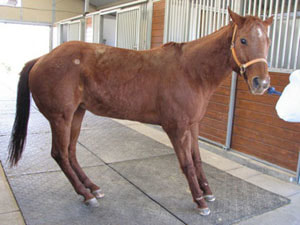Recognizing Laminitis Triggers and Prevention in Horses

Laminitis is a painful and potentially debilitating condition affecting horses, characterized by inflammation of the laminae—the tissues bonding the hoof wall to the pedal bone. Early recognition of triggers and effective prevention strategies are crucial for maintaining equine health and welfare.
Understanding Laminitis
Laminitis can result from various causes, often linked to metabolic, mechanical, or toxic factors. The condition leads to severe pain and lameness, and in chronic cases, it can cause permanent hoof damage.
Common Triggers of Laminitis
| Trigger Type | Description | Examples |
|---|---|---|
| Dietary | Excessive intake of rich carbohydrates or sudden diet changes | Overfeeding grain, lush pasture |
| Metabolic Disorders | Underlying health issues affecting metabolism | Equine metabolic syndrome, Cushing’s disease |
| Mechanical Stress | Excessive weight-bearing or trauma to the hooves | Obesity, prolonged standing, hard surfaces |
| Toxic Exposure | Ingestion or exposure to toxins that affect blood flow to the hooves | Black walnut shavings, certain medications |
Signs and Symptoms to Watch For
- Reluctance to move or shifting weight frequently
- Heat and increased digital pulse in the hooves
- Stiffness, especially in the front feet
- Visible changes in hoof shape or rings on the hoof wall
Prevention Strategies
Nutritional Management
- Provide a balanced diet low in non-structural carbohydrates
- Avoid sudden changes in feed
- Monitor pasture quality and limit access to lush grass during high-risk periods
Regular Hoof Care
- Schedule routine farrier visits every 6-8 weeks
- Maintain proper hoof trimming to ensure even weight distribution
Weight and Exercise Management
- Maintain a healthy body condition score
- Implement regular, moderate exercise to improve circulation and metabolism
Monitoring and Veterinary Care
- Regular veterinary check-ups to detect early signs
- Blood tests for metabolic disorders
- Immediate intervention at the first sign of laminitis
Frequently Asked Questions (FAQ)
Q1: Can laminitis be reversed?
A: Early-stage laminitis can sometimes be managed and reversed with prompt treatment, but chronic laminitis often leads to permanent damage.
Q2: Is laminitis contagious?
A: No, laminitis is not contagious; it results from internal or environmental factors.
Q3: How quickly should I act if I suspect laminitis?
A: Immediate veterinary attention is critical to prevent progression and complications.
Q4: Are certain breeds more prone to laminitis?
A: Yes, ponies and breeds prone to metabolic disorders have a higher risk.
Conclusion
Recognizing the triggers and implementing preventive measures can significantly reduce the risk of laminitis in horses. Through attentive care, proper nutrition, and regular veterinary support, horse owners can protect their animals from this painful condition and promote long-term hoof health.
